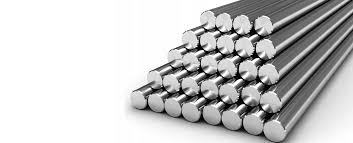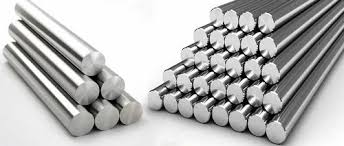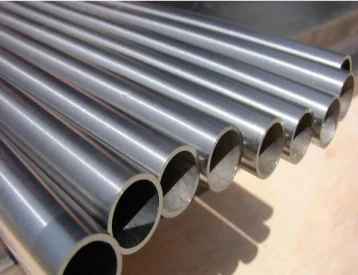When it comes to selecting materials for high-temperature applications, the choice of alloy is critical. High-temperature alloys offer exceptional strength and resistance to heat, making them ideal for demanding environments. However, not all high-temperature alloys are created equal. Some may excel in specific conditions while others fall short. Understanding the unique properties and characteristics of each high-temperature alloy is key to ensuring optimal performance in your applications. In this post, we will explore the world of high-temperature alloys, highlighting the contrasting features that set them apart.

Current Trends in High-Temperature Alloys
Chemical Composition
High-temperature alloys have seen minimal chemical composition changes over the last three decades. These materials, also known as resistant metals, are specifically designed to withstand elevated temperatures.
Processing Innovations
Recent advancements in high-temperature alloy performance have primarily stemmed from processing improvements. These enhancements have enabled the alloys to exhibit superior properties at extreme temperatures.
Strength and Stability
High-temperature alloys play a critical role in providing strength and stability within specific temperature ranges. They are commonly used in applications such as radiant tubes, where they maintain structural integrity even at temperatures far beyond room temperature.
Overview of Four Alloy Groups
Iron-Base
When it comes to high-temperature alloys, they are categorized into different groups based on their matrix composition. Iron-Base alloys, known for their strength at elevated temperatures, consist of low chromium alloys and martensitic stainless steels. These alloys can withstand temperatures up to1000℃.
Iron-Nickel Base
The Iron-Nickel Base group combines the properties of both iron and nickel, offering excellent resistance to oxidation and corrosion at high temperatures. These alloys are commonly used in applications requiring high strength and good creep resistance.
Nickel-Base
Nickel-Base Alloys, with a higher nickel content and essential alloying elements like chromium and molybdenum, exhibit exceptional resistance to extreme heat environments. They are widely utilized in aerospace, chemical processing, and gas turbine components due to their superior mechanical properties.
Cobalt Base
Cobalt Base alloys are renowned for their exceptional wear resistance, high temperature strength, and corrosion resistance. These alloys find applications in industries such as aerospace, medical implants, and power generation where reliability under extreme conditions is crucial.

Alloy Cost Versus Capability Analysis
Iron-base Martensitic Alloys
When considering high-temperature alloys, it's crucial to understand how the alloy content increases with temperature and strength requirements. This increase directly impacts the overall cost of the alloy. For applications requiring temperatures in the range of 500℃ – 1000℃ (260℃ – 540℃), Iron-base martensitic alloys are commonly used due to their excellent performance.
These alloys offer a balance between cost and capability, making them ideal for moderate temperature service conditions. Their ability to withstand high temperatures while maintaining strength makes them a cost-effective choice for various industrial applications.
Cost-Effectiveness Comparison
In evaluating different high-temperature alloys, it's essential to compare their capabilities and performance criteria against their cost. Some alloys may offer superior strength and durability but come at a higher price point. On the other hand, there are more budget-friendly options that still meet specific temperature requirements efficiently.
When selecting a high-temperature alloy, you must weigh the trade-offs between cost and capabilities to ensure that your choice aligns with your project's needs and budget constraints. By understanding these factors, you can make an informed decision that optimizes both performance and financial considerations.
Criteria for Selecting High-Temperature Alloys
Cost-Effectiveness
When considering alloy selection, one crucial factor is cost-effectiveness. Assess the balance between material expenses and desired properties.
Design Criteria
Your high-temperature alloy choice should align with specific design criteria to ensure optimal performance under extreme conditions.
Choosing the right alloy demands a comprehensive understanding of its capabilities. Evaluate factors like corrosion resistance, heat resistance, and high strength to make informed decisions.
Stability Challenges
Designers often face challenges in meeting stability requirements when working with high-temperature alloys. Factors like good oxidation resistance and melting points play key roles in ensuring long-term performance.
In your selection process, prioritize characteristics such as fracture toughness, maximum exposure temperature, and other resistant properties. These attributes are essential for maintaining structural integrity under harsh operating conditions.

Manufacturing Advances in Alloy Production
Processing Techniques
When it comes to high-temperature alloy manufacturing, recent advancements in processing techniques have significantly boosted performance. By utilizing innovative methods, alloy content can now be tailored for specific applications, enhancing overall alloy performance.
These techniques involve precise control over the composition of metals and monolithic ceramics, resulting in improved corrosion and oxidation resistance. The development of solid solutions with elements like tantalum has led to alloys with excellent strength and durability for demanding environments such as turbine engines.
Environmental Resistance
Innovative manufacturing methods play a crucial role in enhancing the environmental resistance of high-temperature alloys. Through advanced processes like ceramic matrix composites, these alloys exhibit superior engineering properties, making them ideal for critical components in aerospace and industrial equipment.
Understanding Forging Processes
Rotary Forge
When forging high-temperature alloys, the rotary forge process plays a crucial role. This technique involves rotating a workpiece between two dies to shape it accurately.
Process Control
Controlling the forging process is vital for achieving the desired mechanical properties in high-temperature alloys. It ensures uniformity and consistency in the final product.
Reprecipitation Process
The reprecipitation process is a key step in forging high-temperature alloys. During this stage, fine particles form within the alloy, enhancing its strength and durability.
Impact on Microstructure
Forging parameters significantly impact the microstructure and properties of high-temperature alloys. Proper control of temperature, pressure, and deformation rate is essential for optimal results.
When forging these alloys, you need to consider various factors such as temperature gradients, strain rates, and cooling rates. These variables directly influence the final product's characteristics.
-
Proper process control leads to enhanced structural integrity and performance.
-
The reprecipitation process strengthens the alloy by forming fine particles within it.
Reducing Mechanical Test Requirements
Streamlining Techniques
When evaluating high-temperature alloys, reducing mechanical test requirements can offer significant benefits. By leveraging advancements in material characterization techniques, you can streamline testing procedures. This not only saves time but also enhances the efficiency of the evaluation process.
Non-destructive testing methods play a crucial role in this optimization. They allow you to assess the quality and integrity of high-temperature alloy components without compromising their structural properties. By adopting reliable non-destructive testing methods, you ensure that the components meet the required standards for mechanical properties such as tensile strength, creep resistance, and environmental resistance.

Enhanced Efficiency
Reducing mechanical test requirements does not mean compromising on quality. Instead, it enables you to focus on critical parameters that truly impact the performance of high-temperature alloys. By minimizing unnecessary tests and controls, you can allocate resources more effectively towards areas that directly contribute to the alloy's performance under extreme conditions.
-
Pros:
-
Improved efficiency in testing procedures
-
Enhanced focus on critical parameters
Final Remarks
You've delved into the realm of high-temperature alloys, exploring trends, alloy groups, cost considerations, selection criteria, manufacturing advancements, forging processes, and test requirements. By understanding these facets, you're better equipped to make informed decisions when choosing the right alloy for your specific needs.
As you navigate the intricacies of high-temperature alloys, remember to stay updated on emerging technologies and industry shifts. Continual learning and adaptation are key in this dynamic field. Keep exploring new possibilities and refining your alloy selection processes to stay ahead in the ever-evolving landscape of high-temperature applications.

Frequently Asked Questions
What are high-temperature alloys commonly used for?
High-temperature alloys are typically used in applications where materials need to withstand elevated temperatures without losing their mechanical properties, making them ideal for industries like aerospace, automotive, and energy production.
How can I select the right high-temperature alloy for my project?
To choose the best high-temperature alloy, consider factors such as operating temperature, mechanical properties required, corrosion resistance, cost-effectiveness, and manufacturability. Consulting with materials engineers or utilizing alloy selection guides can help make an informed decision.
What are the key manufacturing advances impacting high-temperature alloy production?
Recent advancements in manufacturing techniques like additive manufacturing (3D printing), powder metallurgy, and controlled atmosphere heat treatments have significantly improved the quality, performance, and cost-effectiveness of high-temperature alloy production processes.
Why is understanding forging processes crucial in working with high-temperature alloys?
Having a good grasp of forging processes is essential when working with high-temperature alloys as it helps optimize material properties, enhance structural integrity, reduce defects, and ensure consistent quality in components designed to withstand extreme thermal conditions.
How can reducing mechanical test requirements benefit the use of high-temperature alloys?
Yuesuan Trade
wxam.assistant@marketingforce.com

